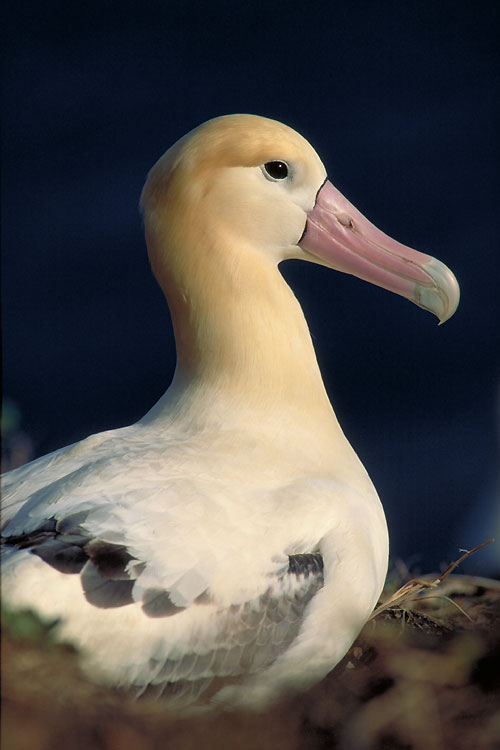Four separate bilateral conventions for the protection of migratory birds exist between the United States of America and Canada, Japan, Mexico and Russia. These four conventions protect migratory birds that occur in both countries at some time during their annual cycles.
The Conventions are:
Convention between the U.S. and Great Britain (acting for Canada) for the Protection of Migratory Birds, 1916,
Convention between the U.S. and Mexico for the Protection of Migratory Birds and Game Mammals, 1936,
Convention between the U.S. and Japan for the Protection of Migratory Birds and Birds in Danger of Extinction, 1972, and
Convention Between the United States of America and the Union of Soviet Socialist Republics Concerning the Conservation of Migratory Birds and their Environments, 1976.
The 1916 convention was enacted in the USA by the domestic Migratory Bird Treaty Act (MBTA) of 1918. The MBTA prohibits the taking, killing, or possessing of any migratory bird native to the USA that is included in the treaty, or any part, nest, or egg of such, except as otherwise permitted by regulations. The subsequent treaties between the USA and Mexico, Japan and the Soviet Union (now as the Russian Federation) have been incorporated into the provisions of the MBTA (click here).
Click here and here to access the MBTA statute in full.
The MTBA lists 59 species of procellariiform seabirds in the families Diomedeidae (albatrosses), Procellariidae (petrels, shearwaters and allies) and Hydrobatidae (storm petrels). It is noteworthy that the taxonomic treatment appears to be dated since of the eight taxa of albatrosses listed three (Wandering, Shy and Yellow-nosed) are now considered to constitute 10 species.
The Pink-footed Shearwater Puffinus creatopus is included within the MTBA, this being a species that is expected to be nominated by Chile to the Albatross and Petrel Agreement (click here). Several other petrel and shearwater species identified as potential candidates for ACAP-listing in a 2008 review are also included within the treaty act.

Short-tailed Albatross. Photograph by Hiroshi Hasegawa
The three North Pacific albatrosses (Short-tailed P. albatrus, Laysan Phoebastria immutabilis and Black-footed P. nigripes) are all listed. Click here to read how the treaty between Japan and the USA is working towards helping conserve the Short-tailed Albatross by joint Japanese-US research and management activities, most notably by the attempt to create a new breeding colony on Mukojima on the Ogasawara Islands by the translocation and artificial rearing of chicks. The latest news from Mukojima is that the first Short-tailed egg has been laid at the translocation site and it is hoped it will hatch later this month.
Bilateral migratory bird agreements or conventions exist between a number of other countries. For example, Short-tailed and Black-footed Albatrosses are listed in a bilateral agreement for protecting migratory birds between China and Japan. One of the Short-tailed Albatross breeding colonies is on Minami Kojima in the currently uninhabited Senkaku Islands, who ownership is disputed by these two countries.
Canada, Japan, Mexico, Russia and the USA are not Parties to ACAP, although the USA has been attending and contributing to ACAP meetings since the Agreement's inception as an observer. Both Canada and Japan have been sending observer delegations to ACAP meetings over the last few years. Japan, Mexico and the USA are all considered breeding range states as they support populations of ACAP-listed albatrosses that breed within the North Pacific.
Selected references:
Cooper, J. & Baker, G.B. 2008. Identifying candidate species for inclusion within the Agreement on the Conservation of Albatrosses and Petrels. Marine Ornithology 36: 1-8 + appendices.
Cooper, J., Morgan, K.H. & Tasker, M.L. 2009. Listing North Pacific albatrosses within the Agreement on the Conservation of Albatrosses and Petrels. Marine Ornithology 37: 189-191.
Lee, H.-J.L. 2004. The pragmatic Migratory Bird Treaty Act: protecting "property". Boston College Environmental Affairs Law Review 31: 649-682.
Van Heijnsbergen, P. 1997. International Legal Protection of Wild Fauna and Flora. Amsterdam: IOS Press.
Takahashi, M.A. 2012. Migratory Bird Treaties' Issues and Potentials: are they Valuable Tools or just Curios in the Box? Based on a presentation made at a conference entitled The Migratory Bird Treaty Act: Reshaping a Powerful Conservation Tool? held at the Lewis & Clark Law School Portland, Oregon, USA, 20-22 October 2011.
John Cooper, ACAP Information Officer, 9 January 2013

 English
English  Français
Français  Español
Español